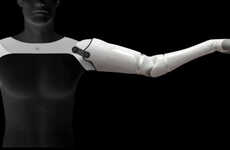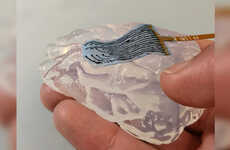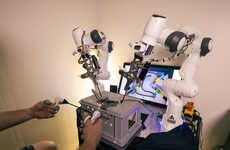The EPFL's Brain-Spine Interface Has Let Primates Walk Again
Researchers from the Swiss Federal Institute of Technology, or EPFL, have created a brain-spine interface that has successfully alleviated paralysis in primates.
The system consists of a brain implant and a system of electrodes around the spinal cord that allows the brain to communicate with the spine and engender locomotion. In many cases of paralysis, one's limbs are themselves completely functional, but an injury to the spinal cord prevents the brains' signals from reaching those extremities. The EPFL's brain-spine interface creates a wireless bridge across that spinal injury, letting the paralyzed limb receive signals and move once again.
In tests, the researchers were able to successfully restore movement in the legs of two rhesus monkeys just six days after they suffered their injuries. With the brain-spine interface, the monkeys were able to move around and behave normally, without the need for any exterior power connection.
The system consists of a brain implant and a system of electrodes around the spinal cord that allows the brain to communicate with the spine and engender locomotion. In many cases of paralysis, one's limbs are themselves completely functional, but an injury to the spinal cord prevents the brains' signals from reaching those extremities. The EPFL's brain-spine interface creates a wireless bridge across that spinal injury, letting the paralyzed limb receive signals and move once again.
In tests, the researchers were able to successfully restore movement in the legs of two rhesus monkeys just six days after they suffered their injuries. With the brain-spine interface, the monkeys were able to move around and behave normally, without the need for any exterior power connection.
Trend Themes
1. Neural Implant Technology - Creating and implementing neural implants to increase or restore motor function presents a major disruption opportunity in the medical industry.
2. Brain-spine Interface - Developing systems to allow communication between the brain and spine, such as the EPFL's wireless bridge, has disruptive potential in the neurotechnology field.
3. Paralysis Treatment - Research into treating paralysis through neural implants and brain-spine interfaces presents significant opportunities for medical breakthroughs and disruptive innovation.
Industry Implications
1. Medical Technology - The potential for neural implant and brain-spine interface technology offers significant opportunities for innovative medical devices and treatments that could revolutionze the healthcare industry.
2. Neurotechnology - The development of brain-spine interfaces and neural implants represents a significant disruptive innovation in the field of neurotechnology.
3. Biomedical Engineering - Combining engineering principles with the fields of neuroscience and medicine to develop neural implants and brain-spine interfaces offers a promising area for innovative biomedical engineering solutions.
0.7
Score
Popularity
Activity
Freshness






















